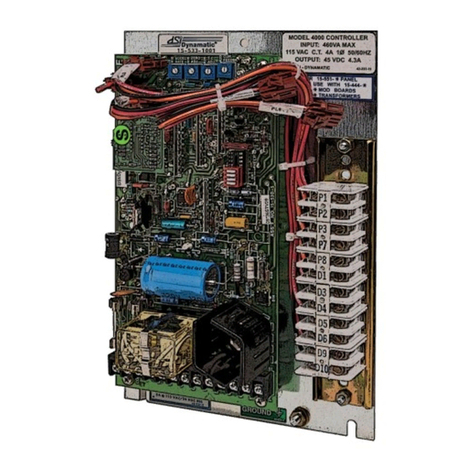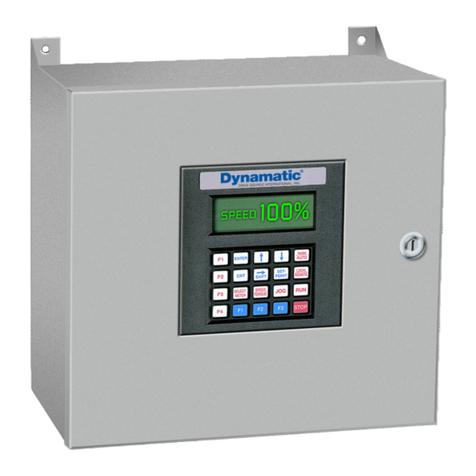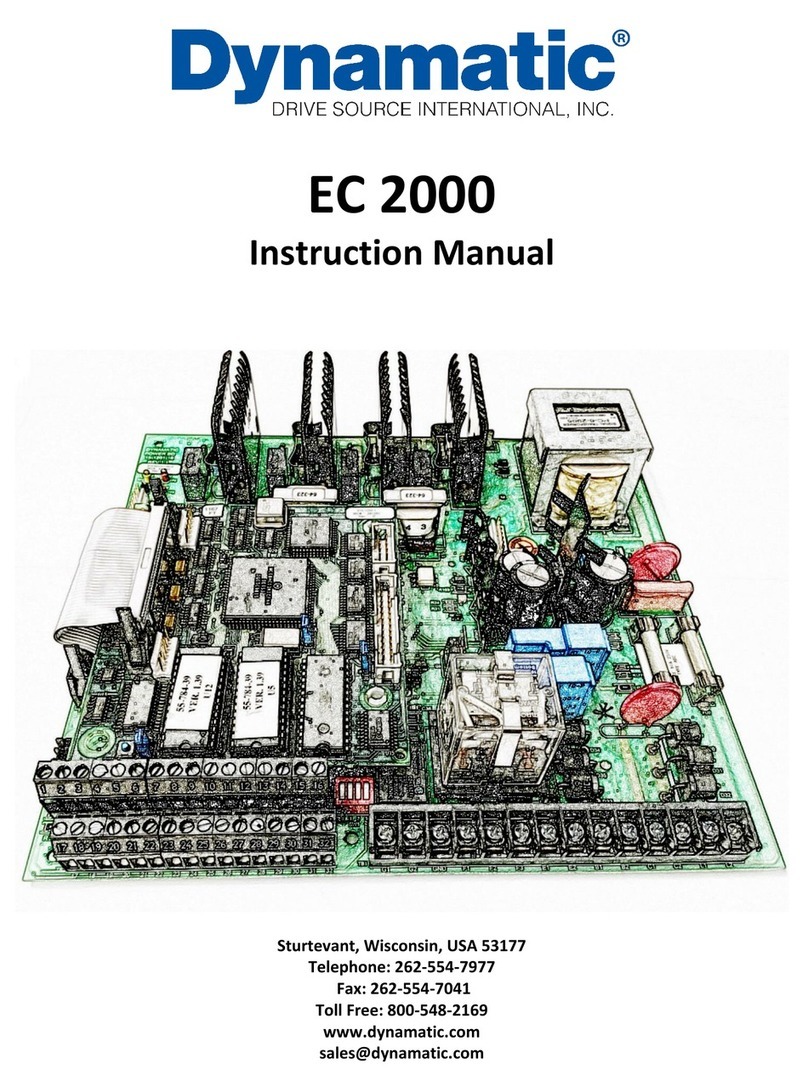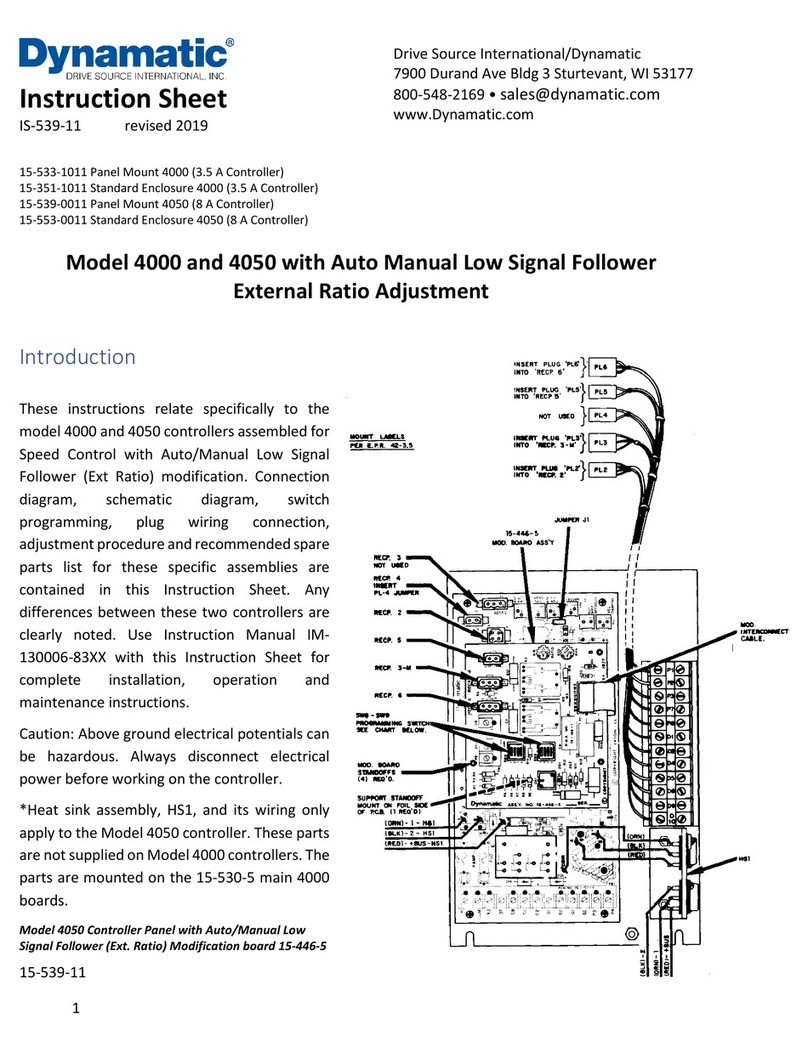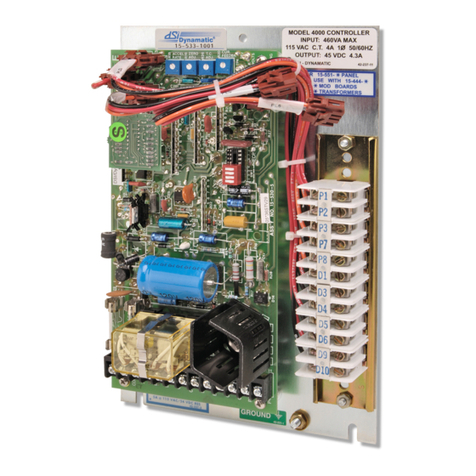
10
ON (or the drive shaft begins to rotate), the LED should start flashing. Now just back off slowly
until the flashing stops. Remove power.
6. For Winder Operation Only:
a. Connect a voltmeter on the 0-10 Vdc range to the Dancer Operated pot R55 terminals -
P1 and +P7. Apply power to the controller. With the dancer at the bottom of its travel,
the meter should read zero volts. Raise the dancer to the top of its travel. The meter
should read approximately 9 Vdc. If these readings are not obtained, check for slippage
of the Dancer Operated pot. Adjust pot linkages if required until these readings are
obtained.
b. Raise the dancer roll to the desired running height and hold it in this position.
c. Connect a voltmeter on the 0-50 Vdc range to clutch coil leads -C1 and +C2. Press the
Start pushbutton. The meter should read zero. Adjust the Dancer Position pot R5 CW until
the meter starts to deflect. Then back off until a zero reading is obtained.
d. Push the Stop pushbutton. Place SW2 in the Lin position.
e. Thread the material through the machine with the dancer lowered.
f. Start the controller with the Start pushbutton.
g. The dancer should rise to midpoint of its travel without overshooting and should be stable
at this point. If the dancer is unstable, increase the setting of the Current Damping pot
R22 CW.
h. Start the main drive. The dancer should drop slightly, and then recover and rise to its set
point. If the dancer drops too low and then overshoots, increase the setting of the
Velocity R21 slightly. Important Note 1: Under normal Dancer Position Operation the
Velocity Damping setting should not be set at more than half the Current Damping setting.
Some critical systems may require higher settings, but care should be taken when doing
so. Higher than required Velocity Damping setting can cause unstable operation.
If the dancer drops but does not quickly recover, the Current Damping pot R22 may be
set to high. Decrease the setting as required.
i. After the dancer has been critically damped (minimum drop with no overshoot), run the
machine at various line speeds and check for stability. If the dancer becomes erratic and
hunts (oscillates), increase the setting of the Current Damping pot R22 CW until stability
is obtained.
j. A certain amount of dancer drop is normal when starting the main drive or changing the
line speed. These position changes can be minimized by careful and correct adjustments
of the Velocity Damping and Current Damping pots. A certain amount of trial and error
will have to be made to obtain optimum performance.
7. For Payoff Operation Only:
a. Connect a voltmeter on the 0-10 Vdc range to the Dancer Operated pot R55 terminals -
P1 and +P7. Apply power to the controller. With the dancer at the top of its travel, the
meter should read zero volts. Lower the dancer to the bottom of its travel. The meter
should read approximately 9 Vdc. If these readings are not obtained, check for slippage
